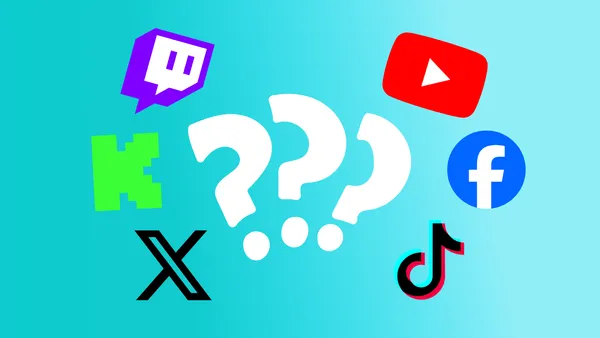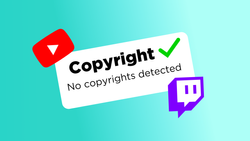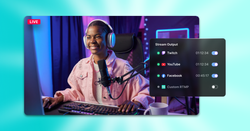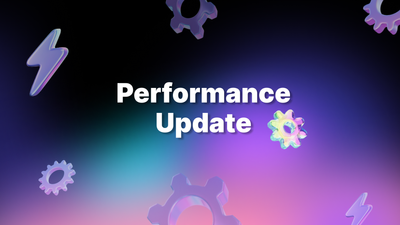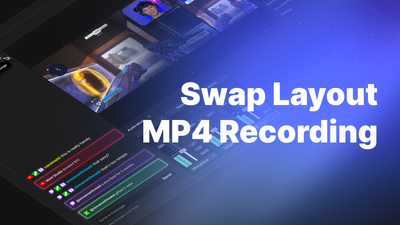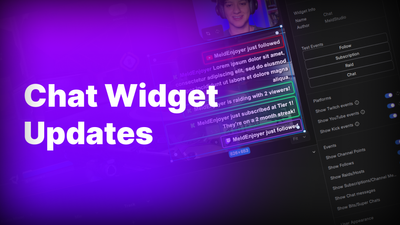On this page
With so many live streaming platforms available today, choosing the right one can feel overwhelming. Whether you’re a gamer looking to grow your audience, a musician hoping to connect with fans, or a creator exploring new ways to share content, selecting the right platform is crucial for your success. Each platform offers unique features, audiences, and opportunities, so understanding what aligns best with your goals is the key to making an informed decision.
Researching Each Platform
Audience Demographics
Understanding the audience demographics and content focus of different streaming platforms is crucial for streamers because it directly affects their ability to grow, engage, and monetize their content. Each platform has a unique audience and strengths that cater to specific content types.
When considering platforms purely based on monetization options, the best choice depends on the type of audience you’re targeting, your content style, and the revenue methods you prefer.
Twitch is ideal for gamers and live streamers seeking recurring revenue through subscriptions, Bits, and ad revenue, though its high competition and revenue splits may be limiting. However, streamers like Kai Cenat have demonstrated the platform's potential for massive growth and monetization. His Mafiathon 2 event, for instance, attracted subscriptions 298% quicker than its first edition, showcasing how innovative and engaging content can help streamers not only stand out but also reclaim records and break new ground in subscriber milestones.
YouTube offers diverse monetization methods like channel memberships, ad revenue, and merchandise integration, making it a strong choice for creators looking for long-term growth and discoverability.
Facebook Gaming provides similar options, such as Stars and fan subscriptions, but its audience may skew more towards community-driven content.
TikTok stands out for creators who excel in short-form and interactive live content, with monetization options like the Creator Fund and Live Gifts.
Instagram and Twitter focus more on brand collaborations and direct support through badges, tips, and affiliate marketing, better suited for influencers with an established following.
Kick offers a highly favorable revenue split (95% for subscriptions) and is great for streamers looking for maximum profit per subscriber, though it may lack the broad audience reach of larger platforms. Each platform caters to different creator needs, so the best choice will depend on your audience demographics, content type, and how you plan to monetize.
Features and Tools
When choosing the best platform to stream on based solely on features and tools, it depends on your content style and audience goals.
Twitch stands out for its robust community engagement tools, including real-time chat, customizable emotes, and extensions for interactive overlays and mini-games, making it ideal for highly interactive streams.
YouTube Live offers high-quality streaming with automatic archiving, turning streams into permanent videos, complemented by monetization options like Super Chat and detailed analytics to refine content strategies.
Facebook Gaming leverages its integration within the Facebook ecosystem, offering interactive tools like real-time chat and community groups, alongside a broad user base and monetization through Stars, subscriptions, and ads.
For mobile-focused or casual streamers, Instagram Live provides real-time comments, Q&A sessions, and the ability to extend streams into IGTV or Stories for additional reach. TikTok Live, with its algorithm-driven discoverability, allows streamers to quickly reach new audiences, featuring interactive elements like virtual gifts and co-hosting capabilities.
Emerging platform Kick appeals to creators seeking favorable revenue splits and real-time chat interaction within a supportive and growing community.
Ease of Use
When determining the easiest streaming platforms for both streamers and viewers to use, it's important to consider the setup process, interface design, and available features.
Twitch and YouTube, while feature-rich and highly versatile, present a steeper learning curve for streamers unfamiliar with advanced tools like analytics and custom overlays.
Platforms like Facebook Gaming and Instagram excel in simplicity, offering straightforward setups and leveraging existing social networks to make streams easily discoverable for viewers.
For viewers, these platforms offer robust discovery options and interactive features such as chat and subscriptions. TikTok and Twitter cater to quick and spontaneous streaming, making them ideal for short-form or casual content, though they lack advanced tools for professional streamers.
Finally, Kick, as a newer platform, emphasizes user-friendliness with simple interfaces for both streamers and viewers, though its community and feature set are still growing. The choice of platform ultimately depends on the streamer’s content goals and technical expertise, as well as the viewing experience they wish to provide.
Growth Potential
When selecting a streaming platform to maximize audience growth, streamers should evaluate the unique features and user demographics of each option.
Twitch offers a large, active community and strong interactivity features like real-time chat and emotes, making it ideal for gaming-focused streamers, though its saturation can make it harder for newcomers to stand out.
YouTube Live provides robust discoverability through its algorithm and search capabilities, with the added benefit of streams doubling as on-demand content, which helps maintain long-term audience engagement. Facebook Gaming allows streamers to tap into existing social networks and interest-based recommendations, though its gaming-centric audience may limit growth for other content types.
Instagram Live works best for streamers with a visual brand, offering seamless integration with Stories and IGTV, though its discoverability is primarily limited to existing followers.
TikTok Live excels in viral potential, with its algorithm exposing content to a broad, trend-driven audience, though streamers may need to adapt their content for the platform's short-form focus.
Twitter Live offers real-time engagement and visibility through hashtags but relies heavily on existing followers and trending topics for growth.
Kick, as an emerging platform, provides an opportunity for early adopters to establish a presence with less competition and creator-friendly policies, though its user base is still growing. The best platform for growth depends on the streamer's content type and target audience, and diversifying across multiple platforms can often yield the best results.
Platform Restrictions
Each streaming platform has its own set of content restrictions to ensure compliance with community standards and protect audiences.
Twitch prohibits explicit content, including nudity, sexually suggestive attire, and "Adults Only" rated games. Hate speech, harassment, and discriminatory behavior are strictly forbidden.
Facebook Gaming enforces its Community Standards, banning hate speech, explicit or violent content, and requiring streamers to have rights to any music used.
Instagram restricts nudity and sexually explicit content, except in specific cases like breastfeeding or medical conditions, and bans hate speech, harassment, and promotion of illegal activities.
YouTube has stringent guidelines against nudity, sexual content, harmful acts, and misinformation, with a strict policy on copyright infringement.
Twitter prohibits explicit content, violence, harassment, and misinformation in live videos, adhering to its Sensitive Media Policy.
TikTok enforces strict rules against nudity, sexual activity, dangerous behavior, and misinformation, with additional protections for minors.
Kick prohibits explicit content, hate speech, and illegal activities but has been loose with their enforcement on these restrictions. Streamers should carefully review each platform’s guidelines on their websites to ensure compliance and avoid penalties or bans.
Choosing The Right Platform
Why stream to Twitch?
Twitch is the largest and most established platform for live streaming, offering unmatched exposure with over 2.5 million viewers at any time and robust monetization options like subscriptions, bits, and ads. Its interactive features, such as live chat, emotes, and tools like hype trains, foster strong community engagement, making it ideal for those committed to consistent live content. However, Twitch is highly competitive and saturated, making it challenging for new streamers to grow. Its limited discoverability tools, unfavorable 50/50 revenue split, and reliance on real-time viewership pose obstacles for smaller creators. Additionally, issues like ad overload, community toxicity, and strict content policies may deter some streamers.
Why stream to YouTube?
YouTube offers powerful discoverability, a global audience, and versatile monetization options, making it an attractive platform for streamers aiming to grow both their reach and income. Its algorithm promotes streams and videos across search results and recommendations, and its diverse audience spans gaming, tutorials, vlogs, and more. High-quality 4K streaming, automatic archiving, and integration with Google’s ecosystem enhance YouTube’s appeal. However, live streams can struggle for visibility as the algorithm favors pre-recorded content, and live chat features are less interactive compared to Twitch. Additionally, monetization options like Super Chats and memberships require eligibility thresholds, and the competition with polished on-demand content can be challenging for smaller creators. YouTube’s dual focus on live and on-demand content makes it a versatile but sometimes secondary option for live streamers prioritizing community interaction.
Why stream to X (Twitter)?
Streaming on X (Twitter) can be a great choice for hosting live events, breaking news, or spontaneous streams that thrive on real-time interaction. With features like live video, Spaces, real-time comments, and integration with hashtags and trends, it allows streamers to connect quickly with their audience and tap into broader conversations. However, it’s not ideal for those seeking long-term growth or professional tools. The platform’s audience favors short-form text and trending topics over live video, leading to lower engagement and discoverability compared to platforms like YouTube or Twitch. Twitter also lacks advanced streaming features, robust monetization options, and long-term content storage like VODs, making it less appealing for building a sustainable streaming career.
Why Stream to Kick?
Kick offers streamers unique opportunities with a 95/5 revenue split, a creator incentive program, and less competition, making it financially appealing and ideal for growth. Its relaxed moderation policies allow for creative freedom, and features like high-quality 1080p streaming and interactive chat enhance audience engagement. However, its lenient content moderation has led to harmful material, posing risks to reputations and safety. Kick’s association with Stake.com, an online gambling site, raises ethical concerns and could alienate certain audiences. As a newer platform with uncertain stability and a smaller user base compared to Twitch and YouTube, Kick presents both exciting potential and significant risks. Streamers should weigh these pros and cons carefully before committing.
Why stream to Facebook Gaming?
Facebook Gaming offers access to a global audience, especially in regions like Southeast Asia and Latin America, with unique opportunities for mobile gaming streamers and competitive monetization options like Stars and the Level Up Program. Its algorithm-driven discoverability can help new streamers grow, and integration with Facebook Groups and events allows for broader community engagement. However, the platform leans heavily toward casual gamers, making it harder for creators in other niches to gain traction. Discoverability often favors paid ads or established creators, and casual viewers may result in lower retention compared to Twitch or YouTube. Additionally, Facebook Gaming lacks a dedicated streamer culture, competes with unrelated content, and relies heavily on disruptive ads, making it less appealing for those targeting younger audiences or seeking strong community-building tools.
Why stream to TikTok?
TikTok offers streamers unparalleled access to a massive and engaged audience, particularly among younger demographics, with its algorithm making it easier to gain exposure compared to platforms like Twitch or YouTube. Its live streaming tools and mobile-first accessibility allow for effortless engagement, and features like virtual gifts provide unique monetization opportunities. However, TikTok’s focus on short-form, bite-sized content can make it difficult for streamers producing long-form or in-depth streams to retain viewer interest. Monetization options are less robust, the algorithm favors polished videos over live content, and technical limitations like the lack of overlays and advanced tools may hinder professional-quality streams. Streamers targeting broader audiences or seeking deeper community-building features may find other platforms more suitable. Ultimately, TikTok is ideal for creators looking for rapid growth and engagement in a fast-paced, short-form environment but less suited for those prioritizing long-form content or traditional streaming features.
Why stream to Instagram?
Instagram offers both opportunities and limitations for streamers. Its vast, engaged user base and mobile-friendly setup make it easy to connect with followers and grow among Gen Z and Millennials. Features like Q&A sessions, polls, and collaborative streams foster real-time interaction, while integration with Stories, Reels, and DMs helps repurpose content and cross-promote. However, Instagram Live primarily targets existing followers, with limited discoverability beyond your audience. The lack of advanced tools like overlays and alerts, minimal monetization options, and restrictions of vertical video format make it less appealing for professional creators or gamers seeking robust streaming capabilities. Streamers focused on casual engagement and audience interaction may thrive on Instagram, but those prioritizing discoverability, advanced tools, and revenue generation may find better alternatives in platforms like Twitch or YouTube.
Multistream to All Platforms
Streaming to multiple platforms enables streamers to connect with wider and more diverse audiences by taking advantage of each platform’s unique strengths. By streaming to multiple platforms simultaneously, streamers increase discoverability, test where their content resonates most, and diversify revenue streams from subscriptions, donations, and ads. It also reduces reliance on a single platform, mitigating risks from algorithm changes or policy updates. With tools like Meld Studio’s multistreaming feature, streamers can effortlessly engage with audiences across platforms, maximizing growth potential and strengthening their brand. Meld Studio is an OBS Alternative for streamers.
FAQ
How do I choose a streaming platform?
Choose a streaming platform by aligning its audience, features, and monetization options with your content type and goals.
How to multi-stream to multiple platforms simultaneously?
Tools like Meld Studio's Multistreaming feature make it simple to engage diverse audiences, test where your content performs best, and diversify revenue streams—all without relying on a single platform.
What's the best platforms for monetizing live streams?
The best platform for monetizing live streams depends on your content and audience. Twitch is great for gamers with subscriptions and Bits but has a steep revenue split, while YouTube offers ads, memberships, and long-term discoverability. Kick provides the highest profit per subscriber with a 95/5 split, and TikTok excels for short-form creators with Live Gifts and the Creator Fund. Multistreaming can help maximize reach across platforms.
What live streaming platforms has the largest audience?
Twitch leads the live streaming industry, accounting for approximately 60% of total watch hours, making it the platform with the largest audience for live streaming content.
What live streaming platforms provide the best tools for audience engagement and interaction?
Twitch offers unmatched audience engagement with real-time chat, customizable emotes, and interactive extensions, making it ideal for community-driven content. YouTube Live excels with tools like Super Chat, detailed analytics, and automatic stream archiving, while TikTok Live and Instagram Live provide mobile-friendly interactivity and algorithm-driven discoverability for casual and short-form creators.
What live streaming platforms have the best video quality?
YouTube Live offers the best video and audio quality with 4K streaming and reliable performance, ideal for professional-grade output. Twitch and Kick also deliver strong quality, with Twitch excelling in interactivity and Kick appealing to new streamers.

